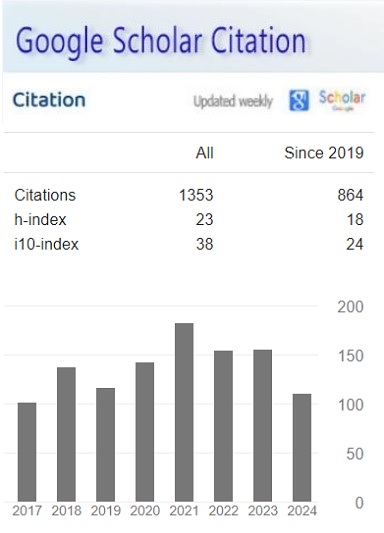Psychographic Segmentation of Saving Market
Keywords:
Abstract
The purpose of this study was to examine the possibility of saving market segmentation by identifying segments consumers using a combination of several dimensions, such as psychological motivations, perceptions, attitudes, and demographics. A sample of 1,800 age-appropriate savers, randomly selected, completed a structured questionnaire which contains more than 190 questions to determine an individual's psychological differences for each dimension. Data related to the key objectives were analyzed using Factor analysis, Cluster analysis, and Multi-factor regression. Results revealed certain segments that differed in psychological and demographic characteristics. The further differences were examined among the segments based on the factors that impact on consumer’s purchasing intention and choice of savings services.
References
A. Kamakura, W., P. Novak, T., E. M. Steenkamp, J. -B., & M. M. Verhallen, T. (1993). Identifying Pan-European Value Segments With a Clusterwise Rank-Logit Model. Journal of Applications en Marketing, 1-24.
Alexandris, K. (2013). Segmenting recreational tennis players according to their involvement level: a psychographic profile based on constraints and motivation. Managing Leisure, Vol 18, pp 179-193. DOI: https://doi.org/10.1080/13606719.2013.796178
B.Lahey, B. (2012). Psychology an introduction. New York: McGraw-Hill company.
Casini, S. (2017). Beyond the Neuro-Realism Fallacy. NUNCIUS, 32, 440-471. DOI: https://doi.org/10.1163/18253911-03202005
D.Straughan, R., & A. Roberts, J. (1999). Environmental segmentation alternatives: a look at green consumer behavior in the new millennium. Journal of Consumer Marketing, VOL. 16 pp. 558-575,. DOI: https://doi.org/10.1108/07363769910297506
D. Wells, W. (1968). Bacward Segmentation. Consumer Behaviour.
D. Wells, W. (1975). Psychographic: A Critical Review. Journal of Marketing Research, 196-213. DOI: https://doi.org/10.1177/002224377501200210
Dibb, S., Stern, P., & Wensley, R. (2002). Marketing knowledge and the value of segmentation. Marketing Intellingence, 113-119. DOI: https://doi.org/10.1108/02634500210418536
Goyat Sulekha. (2011). The basis of market segmentation: a critical review of literature. European Journal of Business and Management, 45-54.
Goyat, S. (2011). The basis of market segmentation: a critical review of literature. European Journal of Business and Management .
Gunawan, S. (2015). The Impact of Motivation, Perception and Attitude toward Consumer Purchasing Decision: A Study Case of Surabaya and Jakarta Society on Carl’s Junior. iBuss Management, Vol. 3, No. 2, page 154-163.
Gunter. B, & A. Furnham. (1992). Consumer Profiles: An Introduction to Psychographics. . London: Routledge.
H. Kassarjian, H. (1971). “Personality and Consumer Behavior: A Review. Journal of Marketing Research, Vol. VIII, pp 409-418. DOI: https://doi.org/10.1177/002224377100800401
H. Kassarjian, H. (1982). Consumer Psychology. Annu.Rev.Psychology, 33:619-49 . DOI: https://doi.org/10.1146/annurev.ps.33.020182.003155
H. Myers, J. (1996). Segmentation and Positioning for Strategic Marketing Decisions. USA: American Marketing Association-1st edition.
Hawkins. D. I, Best. R. J, & Coney, K. A. (1989). Consumer behaviou: Implications for Marketing Strategy (4 edition ed.). Boston: Richard D.Irwin Inc.
Herrero, A., & Perez, A. (2014). Values and Lifestyles in the Adoption of New Technologies Applying VALS scale. Academy of Marketing Studies Journal, 37-55.
Koponen, A. (1960). Personality characteristics of purchasers. Journal of Advertising Research, 6–12.
L.Piedmont, R., R. McCrae, R., & Paul T. Costa, J. (1992). An Assesment of the Edwards Personal Preference Schedule from the Perspective of the Five Factor Model. Journal of Personality Assessment, 67-78. DOI: https://doi.org/10.1207/s15327752jpa5801_6
Ladero, M. M., Casquet, C. G., & Singh, J. (2015). Understanding factors influencing consumer attitudes toward cause-related marketing. International Journal of Nonprofit and Voluntary Sector Marketing, 20, 52–70.
Ladero, M. M., Casquet, C. G., & Singh, J. (2015). Understanding factors influencing consumer attitudes toward cause-related marketing. International Journal of Nonprofit and Voluntary Sector Marketing, 20, 52–70. DOI: https://doi.org/10.1002/nvsm.1517
Lin, C.-F. (2002). Segmenting customer brand preference: demographic or psychographic. Journal of Prdoduct & Brand Management, Vol 11 pp 249-268. DOI: https://doi.org/10.1108/10610420210435443
M. Derobertis, E. (2013). Humanistic Psychology: Alive in the 21st Century. Journal of Humanistic Psychology, 4(53), 419-437. DOI: https://doi.org/10.1177/0022167812473369
Macevoy, T., & Bruce, N. (1990). On Comparing Alternative Segmentation Schemes: The List of Values (LOV) and Values and Life Styles (VALS). Journal of Consumer Research, 105-109. DOI: https://doi.org/10.1086/208541
Massy, W. F., E. Frank, R., W, T. M., & Madison. (1969). Purchasing Behavior and Personal Attributes-Book review. The Journal of Consumer Affairs, Vol. 3, Iss. 1, 95. DOI: https://doi.org/10.9783/9781512817850
Narang, R. (2009). Psychographic segmentation of youth in the evolving Indian retail market. The International Review of Retail, Distrubution and Consumer Research, 535-556. DOI: https://doi.org/10.1080/09593969.2010.520508
Otuedon, & Ukomatimi, M. (2016). The role of creativity in the market segmentation process: the benefits of having an excellent global brand positioning. International Journal of Economics, Commerce and Management, 295.
Otuedon, M. U. (2016). The role of creativity in the market segmentation process: the benefits of having an excellent global brand positioning. International Journal of Economics, Commerce and Management, 295-314.
Sarli, A., & Tat, H. H. (2011). The Role of Psychographic for distinguishing main categories of consumers based on lifestyle, personality and value variables. International Journal of Economics and Research, 29-34.
Shih. V, D. (1986). VALS As A Tool of Tourism Market Research: The Pennsylvania Experience. Journal of Travel Research, 2-11. DOI: https://doi.org/10.1177/004728758602400401
T. Plummer, J. (1974). The Concept and Application of Life Style Segmentation. Journal of Marketing, 38, 33-37. DOI: https://doi.org/10.1177/002224297403800106
Tucker, W. T., & Painter, J. J. (1961). Personality and product use. Journal of Applied Psychology, 325-329. DOI: https://doi.org/10.1037/h0046370
Vyncke, P. (2002). Lifestyle Segmentation: From Attitudes, Interests and Opinions, to Value, Aesthetic Styles, Life Visions and Media Preferences. European Journal of Communication, 445-463.
Vyncke, P. (2002). Lifestyle Segmentation: From Attitudes, Interests and Opinions, to Values, Aesthetic Styles, Life Visions and Media Preferences. European Journal of Communication, 445-463.
Vyncke. P. (2002). Lifestyle Segmentation: From Attidutes, Interest and Opiniouns, to Value, Aesthetic Styles, Life Visions and Media Preferences. European Journal of Communication, 445-463. DOI: https://doi.org/10.1177/02673231020170040301
W.Gilber, F., & E.Warren, W. (1995). Psychographic Constructs and Demographic Segments. Journal of Psychology & Marketing, 223-237. DOI: https://doi.org/10.1002/mar.4220120306
Wind, J. (1971). Life Style Analyisis: A New Approach. American Marketing Association, 331-343.
Yu, C.-S. (2011). Construction and validation of an e-lifestyle instrument. Journal of Internet research, 21(3), 214-235. DOI: https://doi.org/10.1108/10662241111139282
Published
How to Cite
Issue
Section
License
Copyright (c) 2022 Asian Journal of Applied Science and Engineering

This work is licensed under a Creative Commons Attribution-NonCommercial 4.0 International License.








